Last Updated on July 18, 2024 by Dee
Watercolor flowers are like tiny bursts of sunshine on your paper – they’re vibrant, delicate, and oh-so-charming! If you’ve ever wanted to capture the beauty of nature’s blooms with watercolors, you’re in for a treat. This post is your guide to creating stunning floral masterpieces, even if you’re a beginner. I’ll share some simple techniques to get you started, and to make things even easier, I’ve created a set of free printable watercolor flower templates that you can use as a starting point for your own creations. Grab the free Watercolor Flower Painting Templates at the end of this post!
60+ Watercolor Flowers Painting Ideas










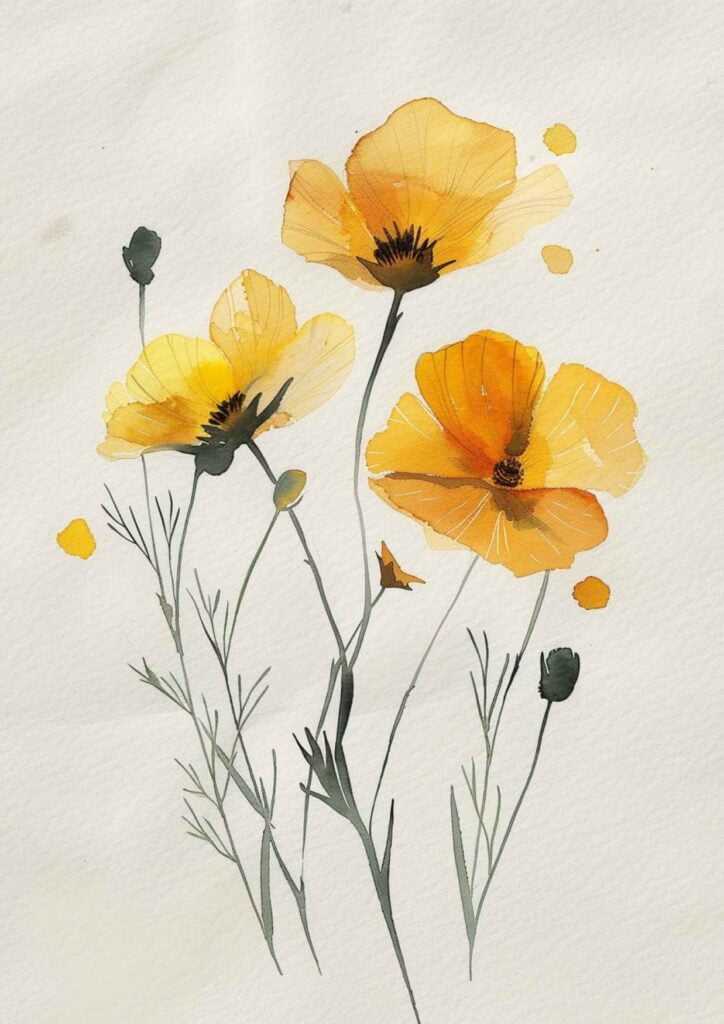












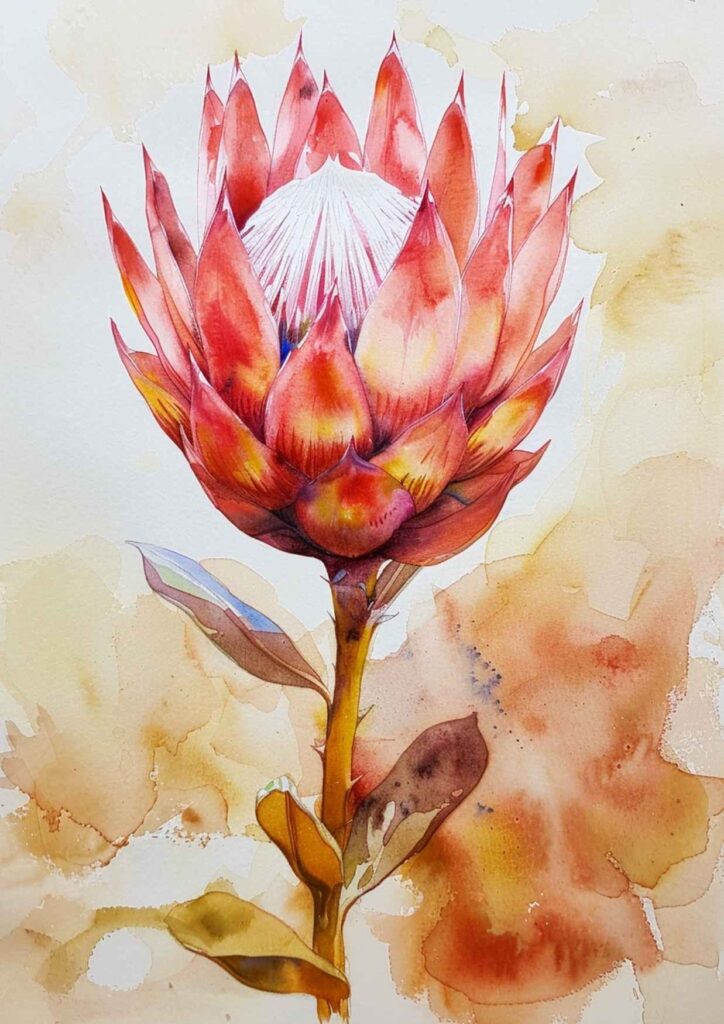







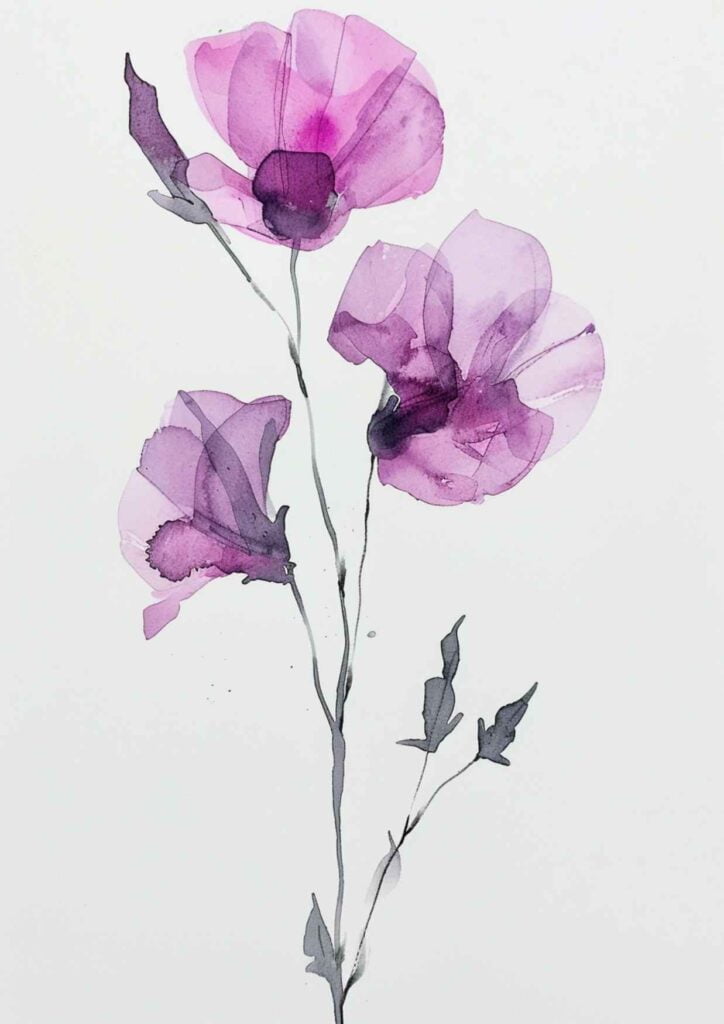






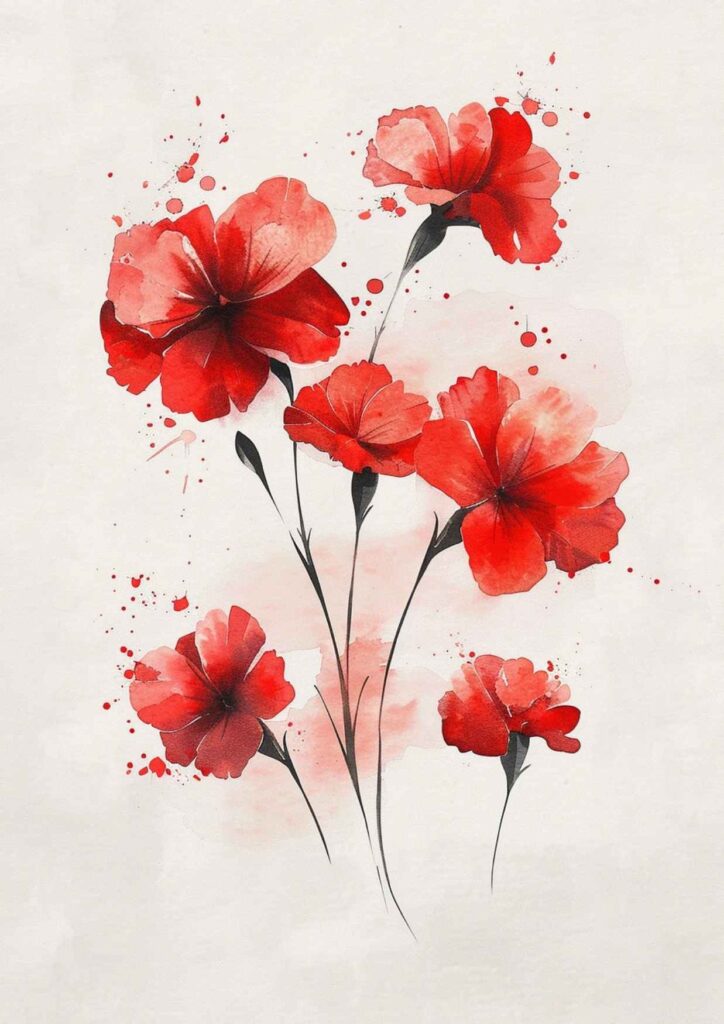


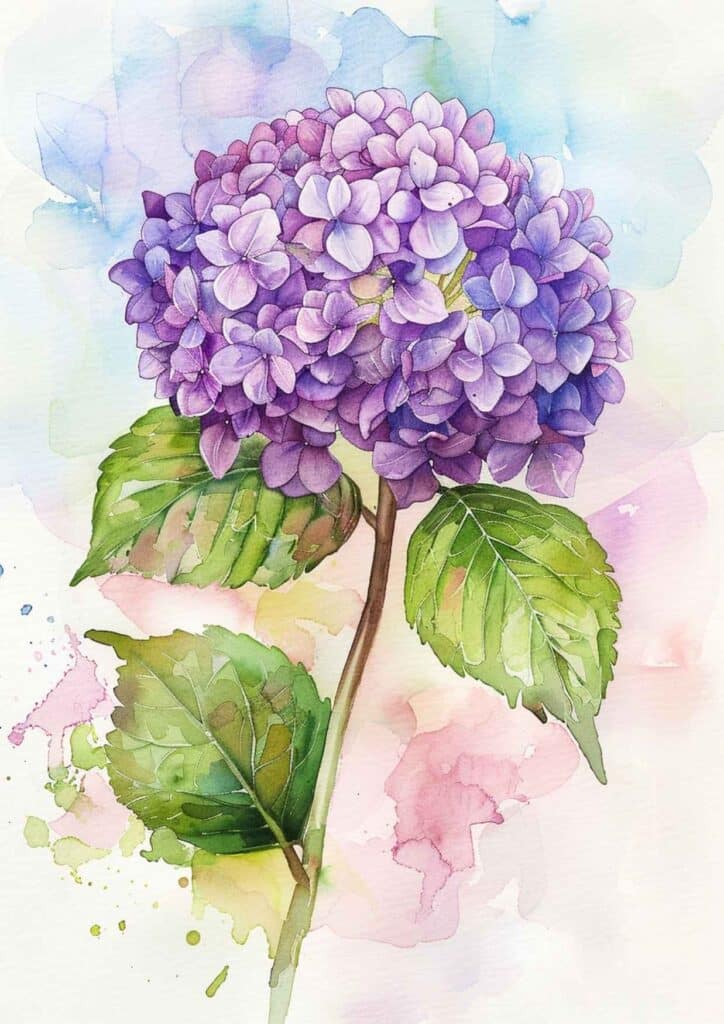
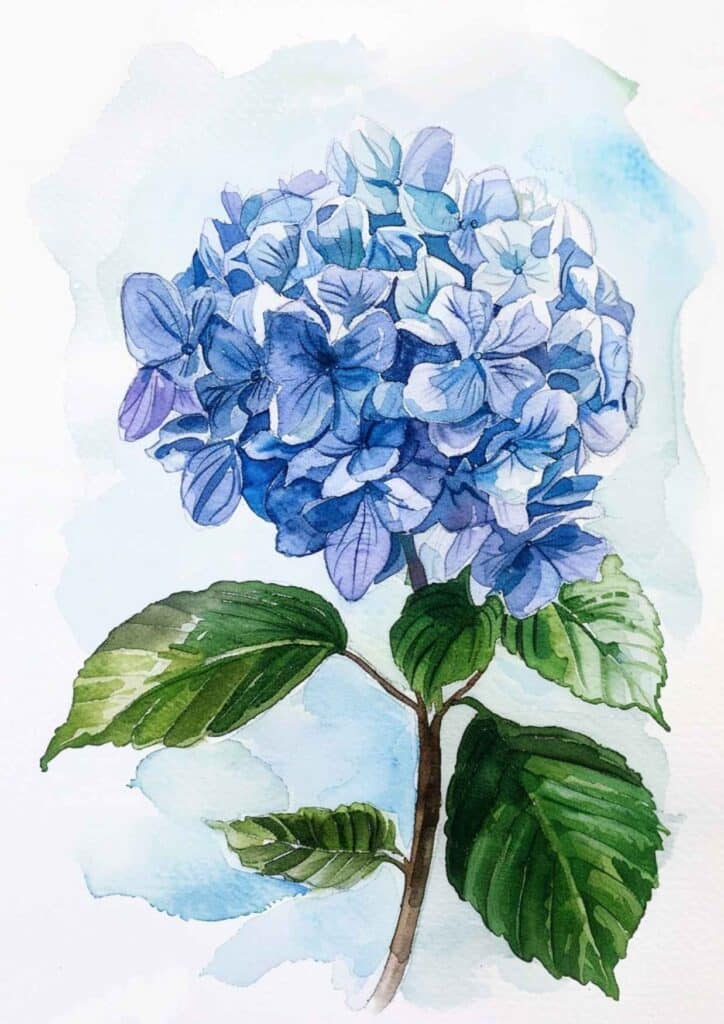





















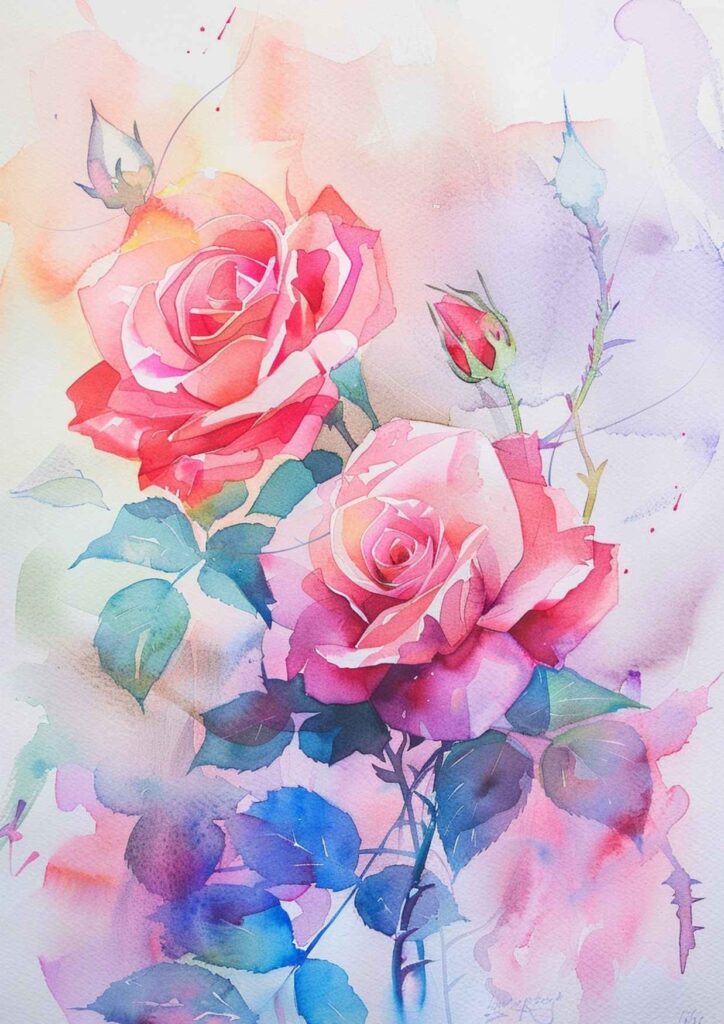


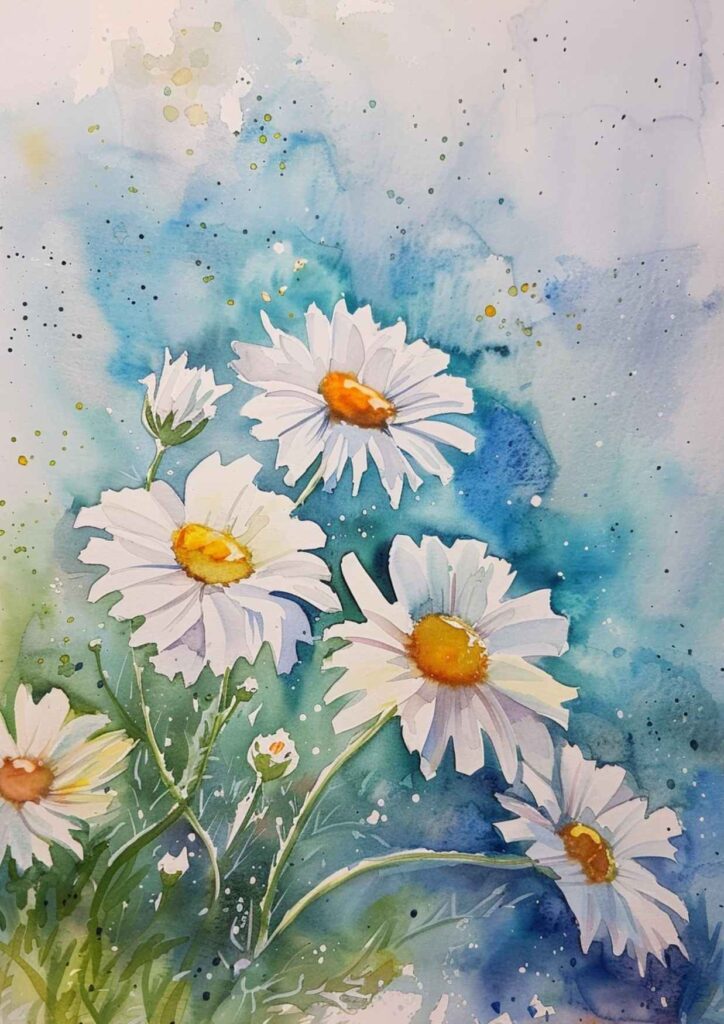
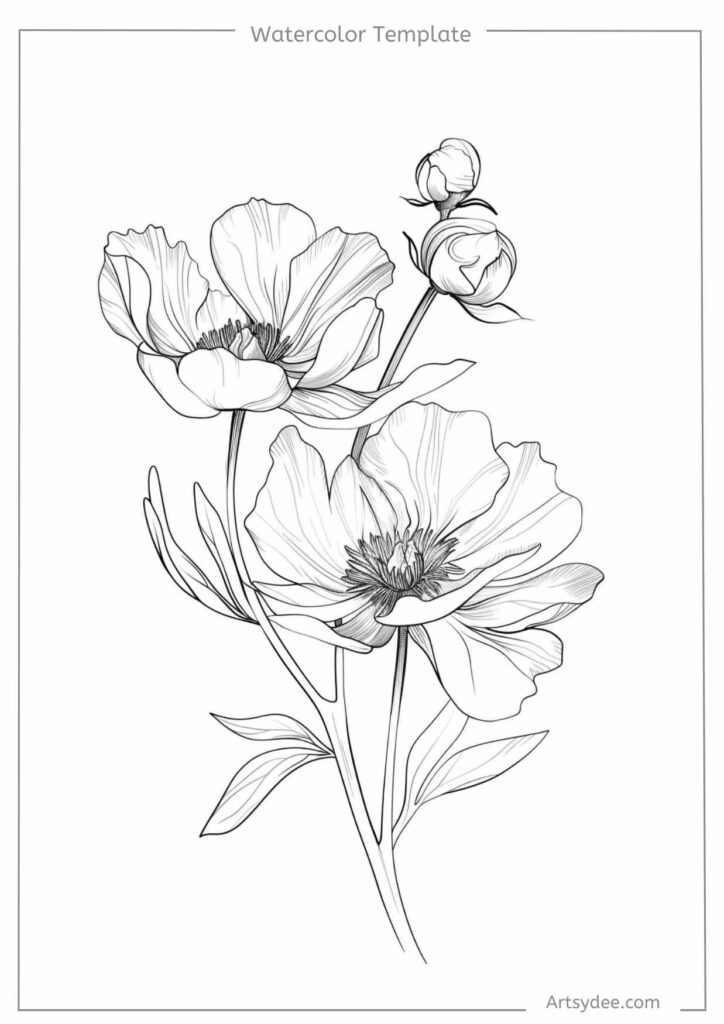
Using Your Free Watercolor Flower Templates
These templates are designed to take the guesswork out of sketching flowers, allowing you to focus on the fun part – painting! Here’s how to use them:
- Print and Trace: Print out your chosen template on regular printer paper. You can even experiment with different paper textures later on. Place the template over your watercolor paper and lightly trace the flower outlines with a pencil.
- Wet-on-Wet Technique: For a soft, diffused look, wet the area inside the flower outlines with clean water before applying your paints. This will allow the colors to blend and create beautiful gradients.
- Layering Colors: Start with lighter shades and gradually build up to darker tones. This will create depth and dimension in your flowers.
- Add Details: Once the base layers are dry, use a smaller brush to add details like veins, petals, and stamen. You can even try adding some splatters or drips for a whimsical touch.
- Experiment and Have Fun: Don’t be afraid to experiment with different colors, techniques, and compositions. There are no rules in watercolor – just let your creativity flow!
What Can You Do With Your Watercolor Flower Paintings?
- Greeting Cards: Turn your floral creations into beautiful handmade greeting cards for birthdays, anniversaries, or any special occasion.
- Wall Art: Frame your paintings and create a stunning gallery wall or use them as individual accents throughout your home.
- Gifts: Watercolor flower paintings make thoughtful and unique gifts for friends and family. You can even personalize them with names or initials.
- Scrapbooking and Journaling: Decorate your scrapbooks or journals with your watercolor flowers to add a touch of nature and whimsy.
- DIY Projects: Use your paintings to embellish plain tote bags, phone cases, or even furniture.
Don’t forget to share your watercolor flower creations with me on social media! I can’t wait to see what you come up with.
Essential Watercolor Painting Supplies List
This is our go-to list of recommended watercolor painting supplies that we use for all our watercolor art, junk journaling, and art journaling!
**This page may contain affiliate links to products I have used or recommend. If you purchase something from this page, I may receive a small percentage of the sale at no extra cost to you.**
- Watercolors: Windsor & Newton is a reputable brand that offers high-quality watercolor paints. You can choose from their range of professional-grade watercolor tubes or pans, depending on your preference.
- Watercolor Paper: Look for cold-pressed, 140lb (300gsm) watercolor paper for the best results. This type of paper is durable and has a nice texture that’s ideal for watercolor painting.
- Brushes: A selection of round and flat brushes in various sizes will give you the versatility you need for different strokes and details. Sable or synthetic brushes designed for watercolor will give you the best performance.
- Palette: A mixing palette with wells for both mixing and holding your paints is essential. It can be a simple plastic one or a porcelain palette for a more luxurious feel.
- Water Container: Any clean jar or container will do, but having two for clean and dirty water can help keep your colors pure.
- Masking Fluid: This is used to cover areas of your painting that you want to keep white. Make sure to apply it with an old brush or a dedicated masking fluid brush, as it can ruin fine bristles.
- Pencils: A soft pencil, like a 2B, is great for sketching your design before painting.
- Eraser: A kneaded eraser is gentle on watercolor paper and can lift pencil lines without damaging the surface.
- Paper Towels or a Rag: These are useful for blotting your brush to control the amount of water and paint.
- Board: If you’re using watercolor paper from a pad or sheets, you might want to tape your paper down to a board to prevent warping.

Grab the Free Watercolor Flowers Painting Templates HERE (below)!
To access the free in-post printables for this post, you’ll just need to create a free account or log in with the Grow.me tool. Then, confirm by email and refresh the page, and ALL my free printables will automatically unlock in every post!
Make sure to get these free Watercolor templates too, and check out my Youtube channel for Watercolor Tips & Tutorials!
Other articles you may enjoy…
The 11 Best Watercolor Pencils + 7 Easy Techniques To Use Them!
Watercolor Sunset Wonders: 30 Inspirations to Paint the Sky
45+ Watercolor Painting Ideas for Beginners: Fun and Easy Techniques to Get Started
Watercolor Markers: A Beginner’s Guide to Choosing and Using Them








